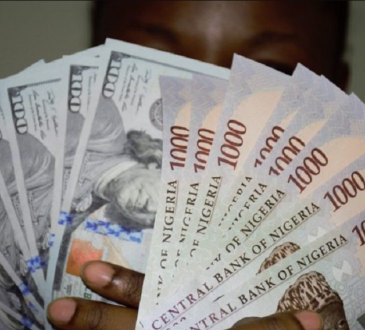Mumbai/Chennai: The Indian rupee on Thursday ended at a record low of 84.06 against the US dollar driven by a strong greenback and outflows by foreign portfolio investments (FPIs) from the equity market. Volatile oil prices amid escalation between Israel and Iran also contributed to this depreciation. The rupee has lost 0.3 per cent in the first half of October 2024. However, unlike the past, sound domestic macro fundamentals and the central bank’s forex war chest of over $ 704.88 billion would prevent any sharp moves in the currency, said experts.
In the first half of October, major global currencies, including the EUR, GBP, and JPY have weakened against the US dollar due to expectations of a slower pace of monetary easing by the Federal Reserve. The US dollar index (DXY) rose by 2.5 per cent during this period. Foreign Portfolio Investors (FPIs) have sold stock worth Rs 70398 crore so far in this month.
Dipanwita Mazumdar, Economist, Bank of Baroda said, “The rupee is expected to remain range-bound between 83.9-84.1/USD for the rest of October 2024, with a slight depreciating bias due to pressure from global demand weakness, inflationary risks, and potential liquidity ness domestically.”
Despite depreciation, the Indian rupee was relatively stable compared to other emerging market currencies like the Thai Baht (-3.5%), Indonesian Rupiah (-2.7%), and Brazilian Real (-2.6%). This was aided by the Reserve Bank of India’s (RBI) intervention and favorable domestic liquidity conditions.”
Explains Samir Lodha, managing director at forex advisory firm QuantArt, “Inflation in US is high, their employment data is good as a result the US dollar is rallying on expectations that the US Fed would opt for a smaller rate cut at its next monetary policy meeting. Also panicky situations such as the ongoing Israel-Iran war is making investors consider safe haven such as the US dollar.”
“India’s trade deficit at $ 22.6 billion is manageable, the current account deficit is also comfortable because of the foreign currency earnings that India receives through IT, ITeS and NRI remittances. Besides, the RBI has huge forex reserves. So, while the rupee is weakening, it is gradual depreciation and there is no crisis. Rupee can move towards $ 85 level but 86 and beyond is unlikely in the next 4-5 months,” added Lodha.
According to experts there would not be much of an impact on inflation as despite the ongoing tensions, crude oil prices declined sharply by 8.1 per cent month-on-month (m-o-m) in September, settling at an average of US$74.3 per barrel (bbl). The decline was mainly due to subdued demand from major economies. India imports 88 per cent of its crude oil requirements from 39 countries.
According to Sudarshan Motwani, chief executive officer of BookMyForex, “The rupee’s fall from $ 83 to $ 84 would make foreign education expensive by Rs 1 per US dollar/equivalent or just over one per cent. Similarly outbound tourism would be expensive by the same percentage.”
For outbound tourists, already hassled by the 5-20 per cent TCS, the rupee weakening has come as a double whammy. Students studying abroad are seeing 15 to 20 per cent hike in fees compared to last year due to the rupee movement.
A weakened rupee is not good news for outbound tourists. The government had earlier imposed a 5 per cent TCS (tax collected at source) for outbound travel and this would go up to 20 per cent if the total spend by an Indian tourist abroad exceeds Rs 7 lakh in a year.
“The weakness in the rupee will make travel costlier. Those who had made part payment for flight bookings, will have to shell out more. Even otherwise, the incidental expenses in the destinations will go up in rupee terms,” said Iqbal Mulla, chief consul of Global Tourism Council.
Though it will have a positive impact on inbound travel, the geo-political turmoil is not supportive of arrivals. The market is not expecting a significant growth in inbound tourists. “Further, some hotels are now accepting payments in dollars,” he said.
In the case of Indian students abroad, the currency impact itself will be 15 to 20 per cent, said Suresh Kumar, director, Truematics, an overseas education consultancy firm.
“Compared to last year, rupee depreciation has led to 15 to 20 per cent hike in fees. Further, many universities in Europe and the US have increased their tuition fees in the past one year,” he said. Apart from tuition fees, other expenses will also go up in rupee terms. Parents sending money abroad are hit by the rupee, which has touched an all-time high.
As far as trade is concerned, a weaker rupee is good for exports and not for imports. Due to the trade deficit, net impact will be negative for India. The higher costs on components and raw materials will make goods costlier across sectors, including electronics, engineering equipment, mobile phones and pharmaceuticals. Some of the segments that would benefit include ready-made garments and agricultural products. Pricier crude oil will lead to inflation across products.





